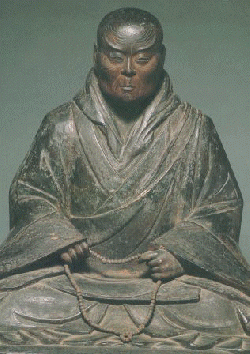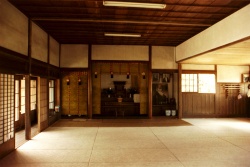Shinran’s Faith
Though I return to the Pure Land of Eternal Peace after my life is at an end, Yet shall I return to this world, again and again, Just as the waves of Wakanoura Bay return to the beach…. When you rejoice in the Nembutsu, consider that two actually rejoice When you rejoice with another, consider that there are three, And that other is Shinran…Thank You, Namo Amida Butsu.” was a Japanese Buddhist monk, who was born in Hino (now a part of Fushimi, Kyoto) at the turbulent close of the Heian Period and lived during the Kamakura Period. Shinran was a pupil of Hōnen and the founder of what ultimately became the Jōdo Shinshū sect in Japan. After twenty years, however, he despaired of ever attaining awakening through such discipline and study; he was also discouraged by the deep corruption that pervaded the mountain monastery. Years earlier, Honen Shonin (1133-1212) had descended Mt. Hiei and begun teaching a radically new understanding of religious practice, declaring that all self-generated efforts toward enlightenment were tainted by attachments and therefore meaningless. Instead of such practice, one should simply say the nembutsu, not as a contemplative exercise or means of gaining merit, but by way of wholly entrusting oneself to the great compassionate activity of the ultimate dimension, symbolized by Amida’s Vow, to bring all beings to enlightenment and spiritual liberation. When he was twenty-nine, Shinran undertook a long retreat at Rokkakudo temple in Kyoto to determine his future course. At dawn on the ninety-fifth day, Prince Shotoku , the founder of Japanese Buddhism, appeared to him in a dream. Shinran took this as a sign that he should seek out Honen, and went to hear his teaching daily for a hundred days. He then abandoned his former Tendai practices and joined Honen’s movement.
1173 Shinran is born
1175 Hōnen founds the Jōdo-shū sect
1201 Shinran becomes a disciple of Hōnen and leaves Mt. Hiei
1207 The nembutsu ban and Shinran’s exile
1211 Shinran is pardoned
1212 Hōnen passes away in Kyoto & Shinran goes to Kantō
1224 (?) Shinran authors Kyogyoshinsho
1234 (?) Shinran goes back to Kyoto
1256 Shinran disowns his son Zenran
Due to his awareness of human limitations, Shinran advocates reliance on tariki, or other power (他力)—the power of Amida Buddha’s made manifest in Amida Buddha’s Primal Vow—in order to attain liberation. Shin Buddhism can therefore be understood as a “practiceless practice,” for there are no specific acts to be performed such as there are in the “Path of Sages” (the other Buddhist schools of the time that advocated ‘jiriki’ (‘self-power’). In Shinran’s own words, Shin Buddhism is considered the “Easy Path” because one is not compelled to perform many difficult, and often esoteric, practices in order to attain higher and higher mental states.

